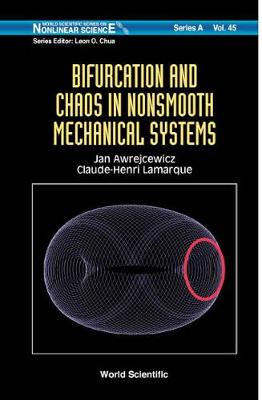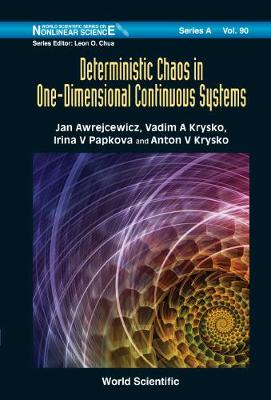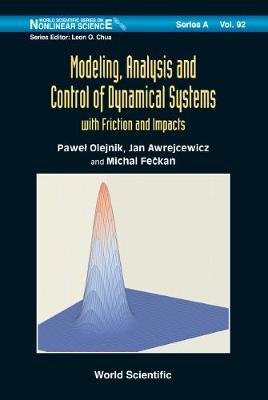World Scientific Series on Nonlinear Science Series A
3 primary works
Book 45
Bifurcation And Chaos In Nonsmooth Mechanical Systems
by Jan Awrejcewicz and Claude-Henri Lamarque
Published 1 January 2003
This book presents the theoretical frame for studying lumped nonsmooth dynamical systems: the mathematical methods are recalled, and adapted numerical methods are introduced (differential inclusions, maximal monotone operators, Filippov theory, Aizerman theory, etc.). Tools available for the analysis of classical smooth nonlinear dynamics (stability analysis, the Melnikov method, bifurcation scenarios, numerical integrators, solvers, etc.) are extended to the nonsmooth frame. Many models and applications arising from mechanical engineering, electrical circuits, material behavior and civil engineering are investigated to illustrate theoretical and computational developments.
Book 90
Deterministic Chaos In One Dimensional Continuous Systems
by Jan Awrejcewicz, Vadim A. Krysko, Irina V Papkova, and Anton V Krysko
Published 20 May 2016
This book focuses on the computational analysis of nonlinear vibrations of structural members (beams, plates, panels, shells), where the studied dynamical problems can be reduced to the consideration of one spatial variable and time. The reduction is carried out based on a formal mathematical approach aimed at reducing the problems with infinite dimension to finite ones. The process also includes a transition from governing nonlinear partial differential equations to a set of finite number of ordinary differential equations.Beginning with an overview of the recent results devoted to the analysis and control of nonlinear dynamics of structural members, placing emphasis on stability, buckling, bifurcation and deterministic chaos, simple chaotic systems are briefly discussed. Next, bifurcation and chaotic dynamics of the Euler-Bernoulli and Timoshenko beams including the geometric and physical nonlinearity as well as the elastic-plastic deformations are illustrated. Despite the employed classical numerical analysis of nonlinear phenomena, the various wavelet transforms and the four Lyapunov exponents are used to detect, monitor and possibly control chaos, hyper-chaos, hyper-hyper-chaos and deep chaos exhibited by rectangular plate-strips and cylindrical panels.The book is intended for post-graduate and doctoral students, applied mathematicians, physicists, teachers and lecturers of universities and companies dealing with a nonlinear dynamical system, as well as theoretically inclined engineers of mechanical and civil engineering.
Book 92
Modeling, Analysis And Control Of Dynamical Systems With Friction And Impacts
by Pawel Olejnik, Michal Feckan, and Jan Awrejcewicz
Published 7 July 2017
This book is aimed primarily towards physicists and mechanical engineers specializing in modeling, analysis, and control of discontinuous systems with friction and impacts. It fills a gap in the existing literature by offering an original contribution to the field of discontinuous mechanical systems based on mathematical and numerical modeling as well as the control of such systems. Each chapter provides the reader with both the theoretical background and results of verified and useful computations, including solutions of the problems of modeling and application of friction laws in numerical computations, results from finding and analyzing impact solutions, the analysis and control of dynamical systems with discontinuities, etc. The contents offer a smooth correspondence between science and engineering and will allow the reader to discover new ideas. Also emphasized is the unity of diverse branches of physics and mathematics towards understanding complex piecewise-smooth dynamical systems. Mathematical models presented will be important in numerical experiments, experimental measurements, and optimization problems found in applied mechanics.


